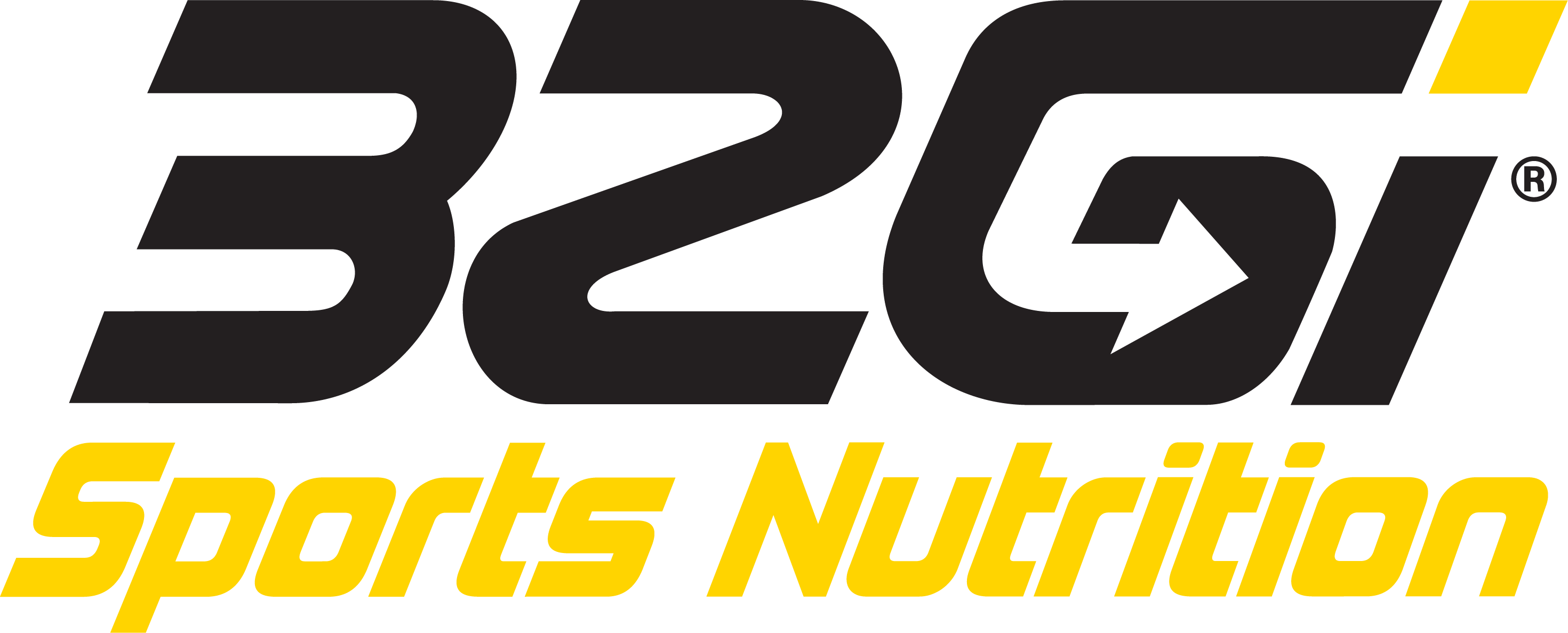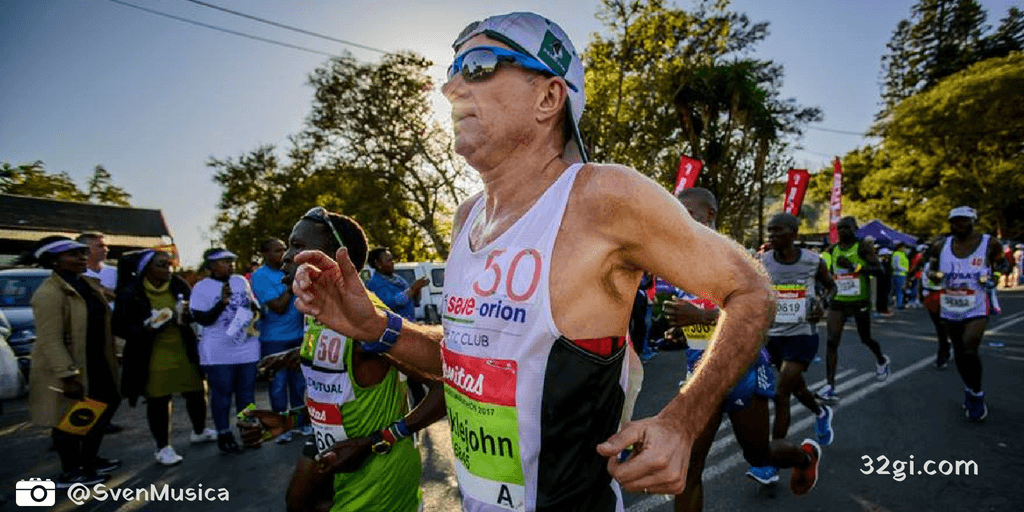1995 Comrades Marathon winner Shaun Meiklejohn joins us on the 32Gi Sports Nutrition podcast this week. Not only is he a former Champion, but Shaun has never run slower than a silver medal, and will be going for triple-green in 2018. He is an inspiration, whom you can learn a lot from.
Transcription:
As we continue our build-up to the Comrades Marathon here on 32Gi Sports Nutrition, it’s a great pleasure now to welcome a former winner of the race, Shaun Meiklejohn, the Champion in 1995. Ironically, Shaun ran his first one – and I’m not a youngster anymore either – the year I was born. Shaun, thanks for joining us on the podcast.
Shaun Meiklejohn: It’s a pleasure David.
Chasing a Comrades Triple-Green
DK: Shaun, this year is going to be a big one for you, a special one. Of course you’ve won it, which is fantastic and I know you’ve taken quite a serious break just after the 2000’s. But this is going to be your 30th, you’re going to be a triple Green, hopefully, at the end of this year?
SM: Yes, I’m very excited about it David. You’d swear I was training for a win, I’m so excited. The next three weeks are going to feel like forever, but it’s a huge milestone for me just getting to that number.
DK: Shaun, great to have you on the line. I must ask you as well, you talk about it being a win, you have a fantastic record you’ve been upholding, you’ve never run lower than a Silver, which is under 7:30. You’re advancing a little bit now, is it something you feel year in and year that it’s going to be tight? Or do you still feel like you can comfortably dip under that 7:30?
SM: I think the years that I’ve gone over 7:00, was my very first one back in 1982, and then last year when I struggled with plantar fasciitis and a bit of a heel spur. I think if I have a good three months under the belt, which I’ve managed, fortunately, to have this year, then I think a sub seven should be on the cards.
The key to ultra-marathon running longevity
DK: Shaun, what do you think is the key to longevity in Comrades? Barry Holland and Louis Massyn have run non-stop, they’re about to break the record if they both finish this year. Yes, they’re anomalies, but in your opinion, what is the longevity for a Comrades runner, how do you manage to run so many of them?
SM: I think it’s really about planning your training carefully and not racing often. If you have the months where you really focus on doing big mileage and you race it, but then you also have those months where you back off quite a bit. Running is more relaxed and it’s not as intense. It gives the body time to recover and my whole running career has pretty much been based around Comrades.
It’s the race that I’ve chosen, that I want to do well in. It’s probably the main reason why I’ve managed to keep on going at a fairly competitive level. As a Master now for being the other side of 55, so the youngsters are coming through. I’d like to think that on the day I’ll be able to give it my best shot. Because again, I’ve just chosen Comrades this year to be the race that I want to do well in.
DK: You say ‘fairly competitive,’ I think year-for- year you’re extremely competitive still Shaun. I want to go back to 1982, that first one, just to give people an idea because sports nutrition has come a long way, things have changed, ideas have changed.
The metamorphosis of Comrades nutrition
If we just look at Prof Noakes, the Lore of Running, when it was all about carbohydrates, now the shift to being more fat adapted. What was your nutritional plan like back in 1982, what did you eat before and how did you get through the race?
SM: It was quite funny actually. I was a varsity student at the time, so we were clueless. We just started running as a hobby and we had a braai the night before. So maybe there was something in that and a couple of beers, but we were clueless.
We didn’t really have any idea on sports nutrition as such. It was only in the later years when our running started improving and I started reading books like the Lore of Running and trying to improve a bit on diet and what to eat and drink on a race.
DK: Just from that first experience in ’82, your running started improving, now ’95, you’re competitive, you’ve taken ’94 off to go race internationally, how had your diet adapted in that space of about 13 years?
A dietary approach ahead of its time
SM: It was a bit of a professional approach. I would often consult a nutritionist, I even used to phone Prof Noakes after doing certain runs, test my blood sugar on the run. Tell him what I’ve drunk, how often I’ve drunk and my blood sugar was either stable or too high or too low and that’s for the drink fuel on the race.
In terms of nutrition at home and the three meals a day, I think with running we’re pretty lucky in that we can pretty much get away with eating what you like. It’s because we train so hard, we work up an appetite, we burn it off. The obvious things to avoid would be your fast foods and takeaways and fatty foods and stuff like that. It was pretty much what I would consider a normal average diet.
It’s only in the years that I ran fulltime and that, that I was a lot pickier and fussy about what I ate, but it was red meat, fish, chicken, vegetables and fruit. I still ate a little bit of carbohydrates through the course of the day but not high carb.
DK: This whole change in more recent years towards more fat, as you say, green leafy vegetables, chicken, fish, it wasn’t really an adaption for you because it’s the way you’ve always eaten?
SM: Pretty much so. It was quite radical at one stage, after the six years of not running, I put on 15 or 16kg and felt terrible obviously. I went to see a nutritionist who advised me to get off meat, dairy, sugar and alcohol, which I did for 12 weeks properly and that enabled me to lose all that weight in a very short space of time.
That got me back into running again. It seemed to resemble a bit of a Banting diet because it was pretty much the same time that Prof Noakes was introducing the Banting approach. A lot of people thought I’d gone onto Banting, but I hadn’t really, I just was doing something very similar.
Shaun’s race day nutritional tips
DK: Shaun, you know 32Gi, you use the products quite often, how do you handle, for people out there about to do their novice Comrades or still they’ve only done a couple and they’re playing around with their nutrition. How do you fuel around the Comrades in terms of adapting and putting supplements or sports nutrition, should I say rather, into your diet for the race?
SM: I think the obvious thing is it’s very important to try it properly in training. Whatever you’re planning to do on race day, take the product, carry it with you, have people give it to you or feed you on the road in your training runs. Work on, I always used to work and still do work on consuming roughly 60g of carbohydrates per hour and with that, it’s about 600-800ml of fluid.
The trouble is, it’s a little bit difficult with a race like Comrades in that access to the routes is not allowable, so quite a few people en route that are prepared to go and stand and hand you a drink along the way, but it’s doable, it’s definitely doable.
If you can’t feed off the tables that are there and there’s plenty of tables to get whatever you need in terms of the carbohydrates in whatever form, it’s going to be Coke or other drinks that they have. I’m not too sure what they stock at the tables now, but I feed from my own 32Gi products which I have strategically placed along the route.
The rule of thumb is to get 60g of carbohydrates every hour, from the first hour in. If you’re loaded or hydrated a bit before the event, for a couple of days, you should go into the race pretty well fuelled. I take my first drink at about 12km into the race and thereafter roughly every 6km.
DK: Interesting, thanks for that tip. You talked about access to the route being difficult, I don’t want to get too much into politics, but a recent article with, we’ve Moses Mabhida finish this year and the club tents won’t be there, so there’s been some backlash of that, but taking that aside, Moses Mabhida, you see slight changes to the race every year. But the 2010 World Cup, it’s an impressive stadium, of course a little bit longer this year, what advice do you have for people?
1km – don’t sweat about the Moses Mabhida finish
It is going to be special that finish, it is going to be a bit longer, I know a lot of people worry it’s this. But when you’ve run 90km or 89km, whether it’s 89km or 90km, what advice do you have to the guys who are stressing a little bit at this stage that it’s more than they bargained for?
SM: Like you say, it’s just one extra KM. It’s a long race, 89 or 90km. In 1995 they took us around Pinetown and that made in 91km, so the route does change. I don’t think the runner must get too caught up in the total distance and that’s a good approach to take into the race as well.
I think you start counting down from KM one, another 89 to go, 88 to go, it’s going to make the day very long. I think bearing that in mind, I just break the race down into shorter sections of roughly 10km each, and we deal with that little stretch at a time. That way you eat the race without even noticing the total distance you’ve run.
In more recent years, I run from one party to the next party, so my mind is on the race, sure, but it’s only on who is the person waiting to beat me, and hand me a bottle. Take your mind off the distance because that’s going to make it tougher than it is. It’s tough already, but just, you’re going to have company along the way and don’t get caught up in how far this race is going to be. Just try and enjoy it and break it up into little sections.
DK: Some more great advice there, 1995 champion, Shaun Mieklejohn, with us on 32Gi Sports Nutrition. Shaun, have a great run this year, enjoy your 30th and we will be following and hoping that you do dip under that Silver Medal mark again.
SM: Thanks David, appreciate it, thank you.

